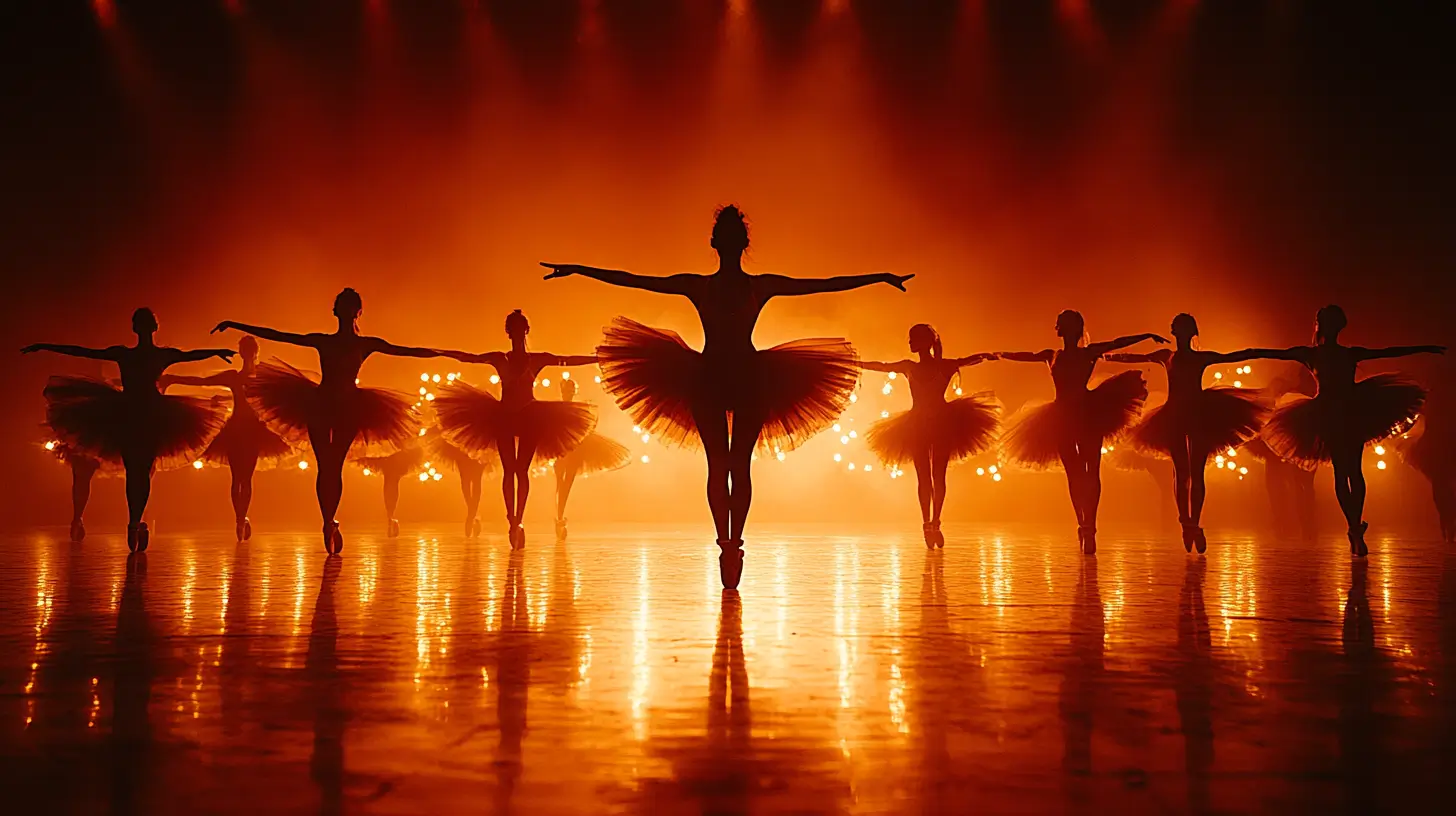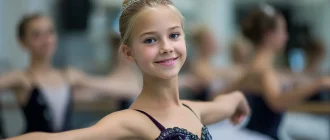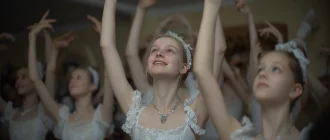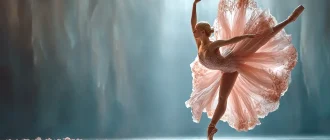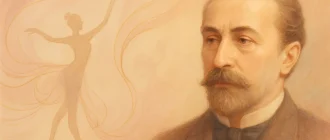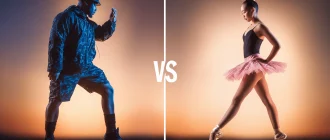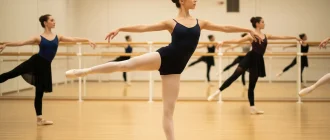Are you curious about why ballet variations are vital? Ballet variations research can enhance a dancer’s performance and provide rich historical insights. This article will explore their importance and history and how to approach learning them.
Graceful Insights
- Dancers must understand a character’s narrative and emotional depth to perform ballet variations, blending technique with storytelling effectively.
- Ballet variations originate from a rich historical context. Classical and contemporary styles offer distinct techniques that cater to various audiences.
- Mastering ballet variations enhances a dancer’s technical skills and stage presence, while original choreography remains crucial for maintaining the integrity of classical ballet.
Art de Podcast
The Importance of Ballet Variations
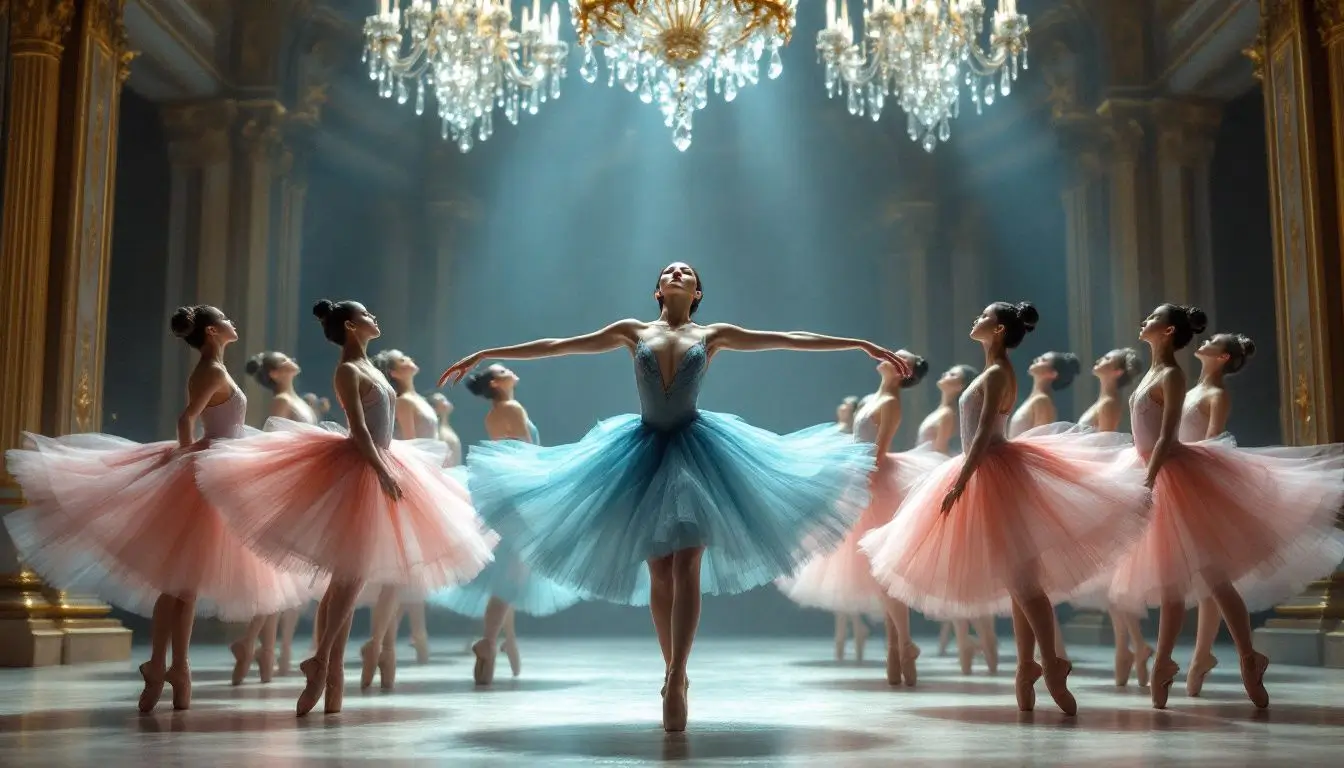
Grasping a character’s narrative and emotional depth is crucial before learning a ballet variation. The essence of a ballet variation lies not just in the steps but in conveying the story and emotions of the character being portrayed. This requires dancers to immerse themselves in the ballet’s storyline, music, and character nuances to deliver a performance that resonates with the audience.
Delving into the ballet’s storyline and music enriches the dancer’s performance, bringing the character to life on stage. Small, expressive details can convey the intended message to the audience, turning a technically proficient dance into a captivating narrative. The original choreography of each variation plays a crucial role in maintaining the authenticity of classical ballet while allowing for adaptations to suit different skill levels.
Ballet variations involve more than executing steps; they demand embodying a character and telling a story through dance. Combining technical skill with emotional expression makes ballet variations a vital part of a dancer’s repertoire and an essential element of full-length ballets.
Historical Context of Ballet Variations
The origins of ballet can be traced back to the Italian Renaissance, where it began as a form of court entertainment. During the 15th and 16th centuries, ballet evolved significantly, eventually reaching France when Catherine de Médicis married Henry II. This move facilitated the creation of the first court ballet by Balthasar de Beaujoyeulx in 1581.
In France, ballet flourished under the patronage of Louis XIV, who established the Académie Royale de Danse and the Académie Royale de Musique. These institutions marked the beginning of a more structured development of ballet, setting the stage for its evolution into a sophisticated art form.
The 18th century saw further refinement with Jean-Georges Noverre, who emphasized narrative through dance and mime in pas de ballet d’action, and Pierre Gardel, who produced diverse works that showcased various genres.
The rise of Romanticism in the early 19th century transformed ballet with iconic works like La Sylphide. During this evolution, original choreography fostered innovation while preserving the integrity of classical forms. This balance between tradition and creativity is essential for new works to resonate with dancers and audiences.
Iconic Ballet Variations
![]()
Among the most beloved ballet variations is the Sugar Plum Fairy from ‘The Nutcracker.’ Known for its delicate choreography and whimsical music, it remains a favorite choice for dancers and audiences.
Another notable variation is the Fairy Doll Variation from the ballet ‘Fairy Doll,’ which is often used to help ballet students learn choreography, technique, and artistry. Another iconic variation is Odile’s from ‘Swan Lake,’ which requires a captivating blend of technical prowess and seductive character portrayal. The Black Swan variation from ‘Swan Lake’ is notable for its technical demands, challenging dancers with intricate turns and leaps. Each performance of this variation is a testament to the dancer’s technical and artistic capabilities, making it a benchmark in ballet competitions.
Medora’s variation from Le Corsaire is another iconic ballet variation. It showcases complex footwork and dramatic flair, highlighting the dancer’s strength and grace. These variations allow dancers to embody characters and bring their stories to life on stage.
Classical vs. Contemporary Variations
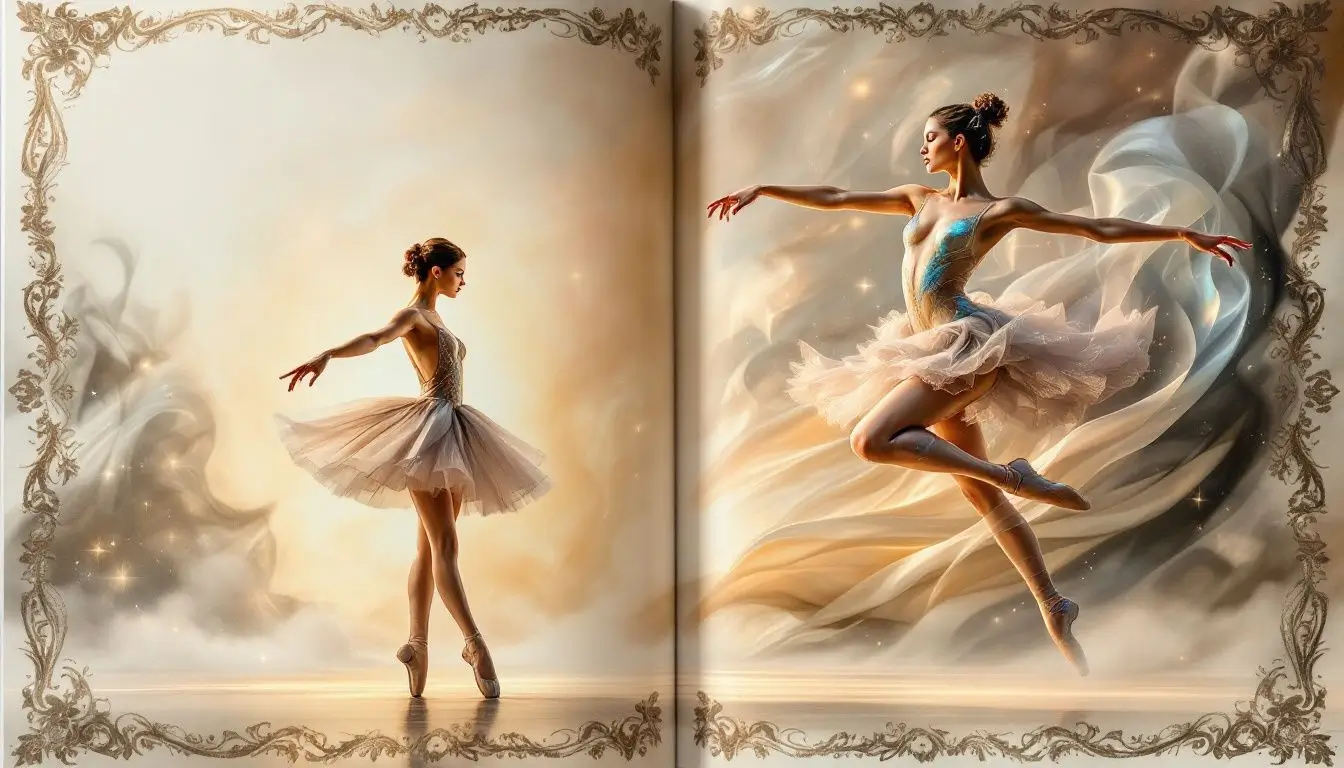
Classical and contemporary ballet variations offer distinct styles and techniques, catering to diverse audiences and dancers. Classical variations, such as those in ‘Don Quixote’ and ‘La Sylphide,’ emphasize traditional techniques and storytelling elements, making them timeless pieces in the ballet repertoire.
Contemporary variations, on the other hand, explore modern themes while still paying homage to classical techniques. This blend gives a fresh perspective, making ballet more relatable and engaging for today’s audiences. However, spending excessive time on a few variations can lead to over-specialization, potentially hindering a dancer’s adaptability in a professional setting.
The development of ballet in Russia, characterized by a blend of Italian and French styles, led to a distinct Russian ballet tradition. This evolution underscores the importance of balancing tradition with innovation, ensuring new works resonate with dancers and audiences.
Learning and Practicing Ballet Variations
Focusing on ballet variations can significantly enhance a dancer’s stamina, stage presence, and overall performance. Mastering these solo dances is essential for any dancer aspiring to excel in their career. It requires a deep understanding of techniques to handle various variations effectively and reduce the risk of injury.
A balanced training approach is essential. Dancers need to develop a versatile skill set, combining technical proficiency with the ability to perform various variations. This balance is necessary for a successful career in ballet, as it allows dancers to adapt to multiple roles and styles. Breaking down the learning process into stages, focusing on research, analysis, rehearsal, and final touches, helps master a ballet variation more efficiently.
Setting specific goals during practice sessions fosters deliberate learning, making each rehearsal purposeful and productive. Analyzing different performances can help dancers identify personal interpretation styles for their roles, further enriching their artistic expression.
Characterization in Ballet Variations
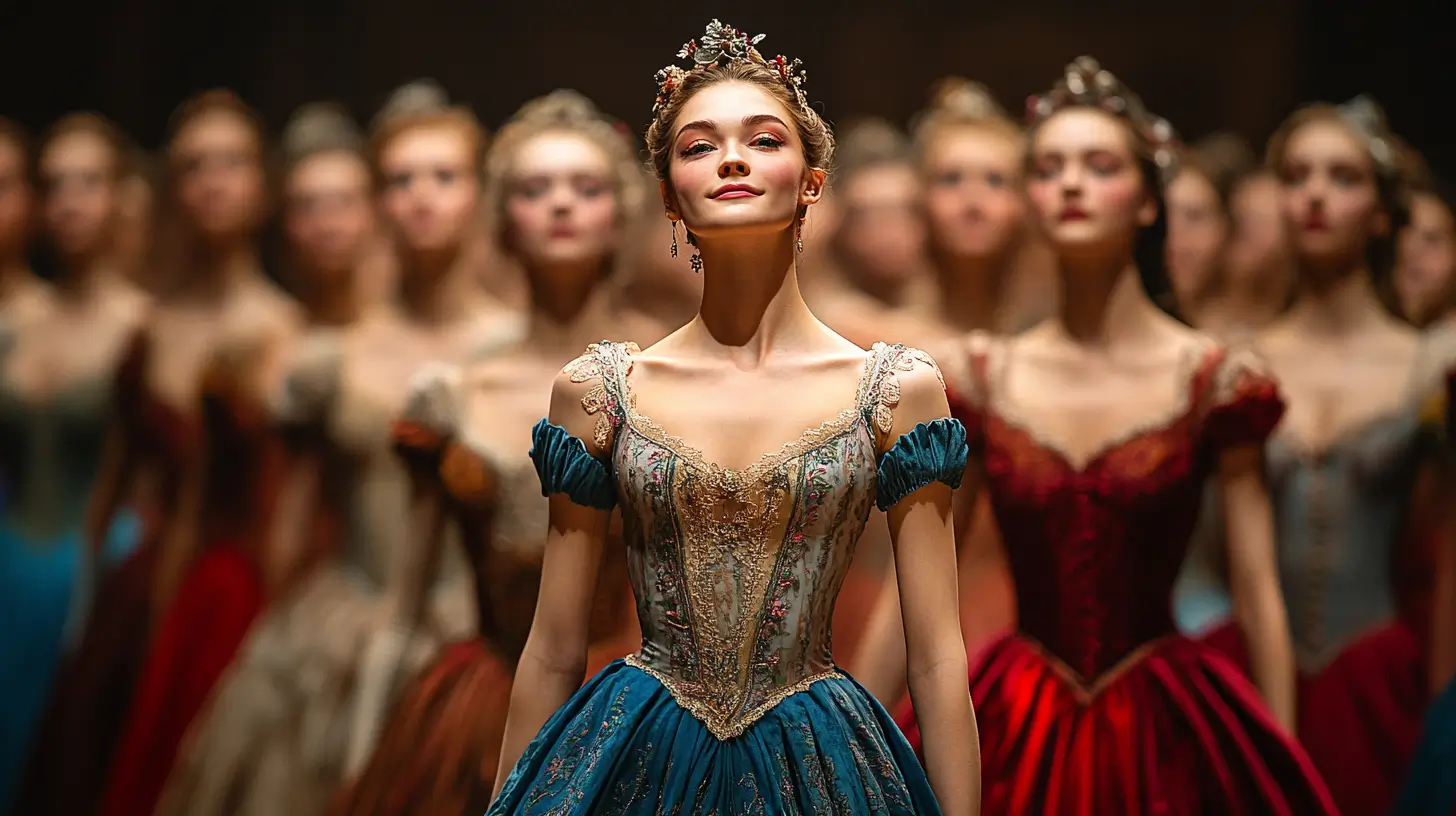
Understanding the story and music behind a variation is vital for effective learning and performance. Understanding the background of a ballet variation allows dancers to connect with their characters on a deeper level, enhancing their portrayal on stage. This preparation is especially important for competitions, where dancers must showcase various skills, from technique to emotional expression.
Altering original choreography can help dancers engage with the material, adding personal expression and enhancing performance quality. Original choreography is a foundation for dancers to explore characterization and artistic expression in ballet, enriching their learning experience.
In productions like ‘Sleeping Beauty,’ variations are pivotal in showcasing each character’s unique qualities, especially during the royal court scene. These variations reflect the character’s personality and the narrative, enhancing the storytelling aspect of the ballet.
Popular Ballet Variations for All Ages
Ballet variations can be tailored to suit dancers of all ages, from young beginners to seasoned professionals. For younger dancers, variations such as the Swan Lake Act II variation act are often modified, emphasizing basic positions and graceful movements. These basic movements develop foundational skills and build confidence in young dancers.
Intermediate variations incorporate complex elements like turns and jumps, challenging dancers and facilitating skill progression. Variations like the Giselle variation highlight a dancer’s strengths while providing opportunities for technical improvement. These variations serve as stepping stones, preparing dancers for more advanced solos.
Advanced variations like the Sugar Plum Fairy and Black Swan demand high technical proficiency and artistic expression. These variations are frequently featured in ballet competitions as benchmarks for assessing a dancer’s abilities. YouTube channels like Natalie Danza – Adult Ballet offer instructional videos for popular variations, making them accessible for novice dancers.
The Role of Original Choreography
Original choreography is key to preserving the artistry of classical ballet. It enables dancers to connect with the historical context and expression of ballet, maintaining the integrity of classical forms while allowing for creative adaptations. The artistry established through original choreography is foundational in ballet, ensuring that each performance remains authentic and engaging.
Marius Petipa, a dominant figure in Russian ballet during the late 19th century, created many enduring classics that remain in the repertoire today. His works are a testament to the importance of original choreography in the evolution of ballet. Petipa balanced tradition with creativity through his innovative approach, setting a high standard for future choreographers.
The connection between historical context and modern artistic expression is vital for ballet’s continuous evolution. Choreographers keep ballet dynamic and relevant by maintaining classical ballet’s essence and integrating contemporary themes.
Ballet Variations in Full-Length Ballets
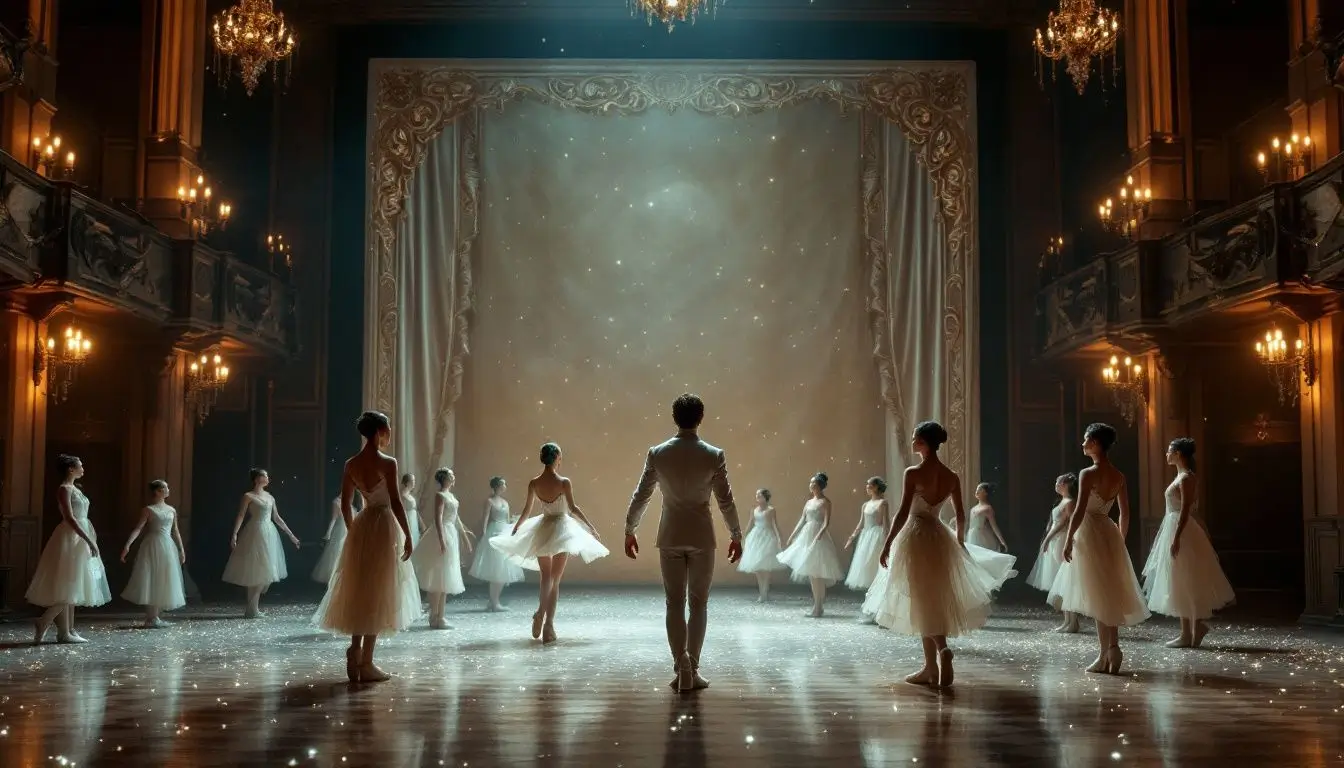
Ballet variations are key to full-length ballets. They showcase individual artistry while preserving the essence of the original choreography. These solo dances allow dancers to highlight their unique skills and interpret the character’s emotions and story through movement.
In full-length ballets, variations advance the narrative and highlight individual brilliance within the larger production. Iconic variations like the Black Swan or the Sugar Plum Fairy are often the highlights of these ballets, captivating audiences with their technical demands and emotional depth.
By incorporating these solo dance performances, full-length ballets balance ensemble work and individual expression. This interplay between solo and group dynamics enriches the artistic experience, making each ballet performance memorable.
Watching and Learning from Videos
Using various video resources can greatly enhance a dancer’s learning process. Watching different interpretations of a variation provides insights into personal style and artistic expression, inspiring dancers to develop their unique voices. Platforms like YouTube offer a wealth of resources, from instructional videos to full performances, making it easier for dancers to learn and refine their skills.
Filming practice sessions is another valuable tool. By recording their performances, dancers can analyze their technique, identify areas for improvement, and refine their artistic intentions. This practice leads to enhanced technical skills and creative expression in ballet variations.
Learning from videos broadens understanding of how variations can be adapted and interpreted. This exposure to different styles and techniques helps dancers become more versatile and adaptable, essential qualities for a successful career in ballet.
| Variation Name | Ballet Origin | Notable Attributes/Features | Comments on Popularity (2020–2024) |
|---|---|---|---|
| Coppelia Prayer | Coppelia | Expressive, technically demanding | It is a frequent competition choice for its lyrical quality and dramatic presence. |
| Tatiana Variation | Onegin | Lyrical, dramatic, emotionally nuanced | It is celebrated for its storytelling and precision, making it a favored recital choice. |
| Les Sylphides Prelude Variation | Les Sylphides | Ethereal and graceful, with subtle musical nuances | Valued for its dream-like quality and expressive choreography among classical dancers. |
| Coppelia Dawn | Coppelia | A fresh reinterpretation with vibrant, nuanced movement | Admired for offering an alternative take on a classic that highlights youthful energy. |
| Mitzi Variation | Mayerling | Distinct musicality and challenging technique | Praised for fusing technical demands with artistic expression, a hit in competition circuits. |
| Flames of Paris Ball Variation | Flames of Paris | Dynamic, powerful, and energetically driven | A staple for its vigorous style and crowd-pleasing bravura, it is often spotlighted in showcases. |
| Alternative Odile Variation | Swan Lake | Innovative reinterpretation of the classic Odile role | Acclaimed for breaking tradition while maintaining technical rigor and expressive depth. |
| Tchai Pas Variation | (Balanchine-inspired) | Brisk tempo with a unique stylistic flair | Gaining a cult following among younger dancers for its distinctive and challenging character. |
| Pizzicato Variation | Sylvia | Playful yet intricate—with accentuated pizzicato footwork | It stands out from the Royal Ballet’s repertoire for its musical and rhythmic charm. |
| Nikiya Act 1 Flute Variation | La Bayadère | Simple, calm, and focused on melodic clarity | Favored for its soothing quality and clarity, it’s become popular in the warm-up and competition routines. |
Resume
In summary, ballet variations are vital to ballet, offering a blend of technical skill and artistic expression that captivates audiences worldwide. From their historical origins to their role in full-length ballets, variations allow dancers to showcase their abilities and tell compelling stories. By mastering these solo dances, dancers can enhance their performance quality and connect deeply with their characters, ensuring that ballet remains a dynamic and engaging art form.
Frequently Asked Questions
What age is too late to learn ballet?
It is never too late to learn ballet, as there is no upper age limit for starting this art form. While advanced levels may be more challenging to attain later in life, the joy of dancing can be experienced at any age.
Is ballet becoming more diverse?
Yes, ballet is becoming more diverse as companies increasingly seek to cast dancers from various racial, ethnic, and cultural backgrounds, providing greater opportunities for underrepresented performers. This shift reflects a broader trend toward inclusion within the industry.
What is the hardest variation in ballet?
The Black Swan from Tchaikovsky’s Swan Lake is often considered the hardest variation in ballet due to its technical demands and emotional depth. Many dancers struggle with variations like the Flames of Paris and the Grand Pas de Deux.
What is the importance of understanding the narrative in ballet variations?
Understanding the narrative in ballet variations is crucial for conveying the character’s emotional depth, which enhances the overall performance and captivates the audience.
How did ballet variations evolve historically?
Ballet variations evolved from court entertainment in the Italian Renaissance to a structured art form in France, heavily influenced by Louis XIV and Jean-Georges Noverre. This historical progression highlights the transformation of ballet into a disciplined and distinct art form.

